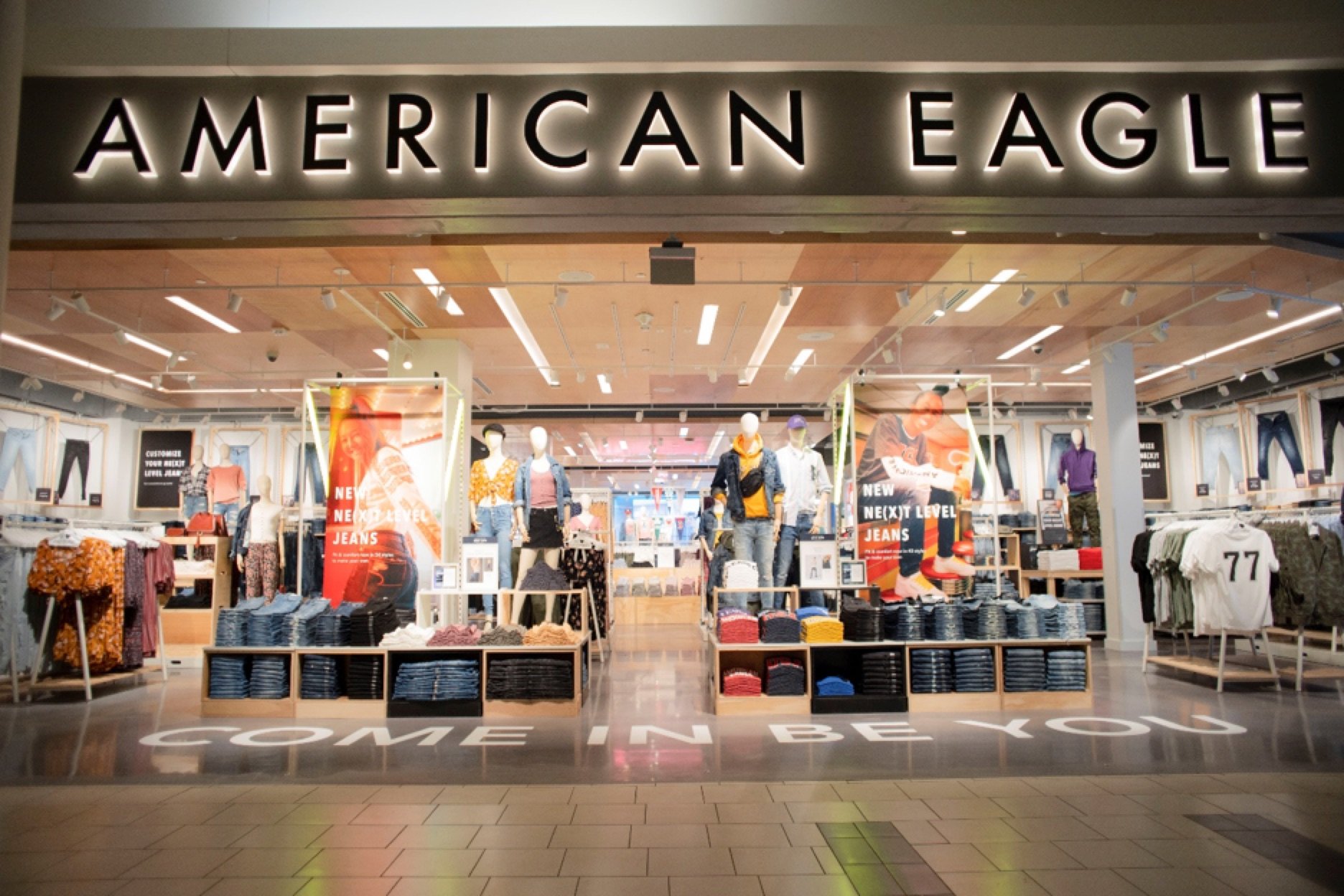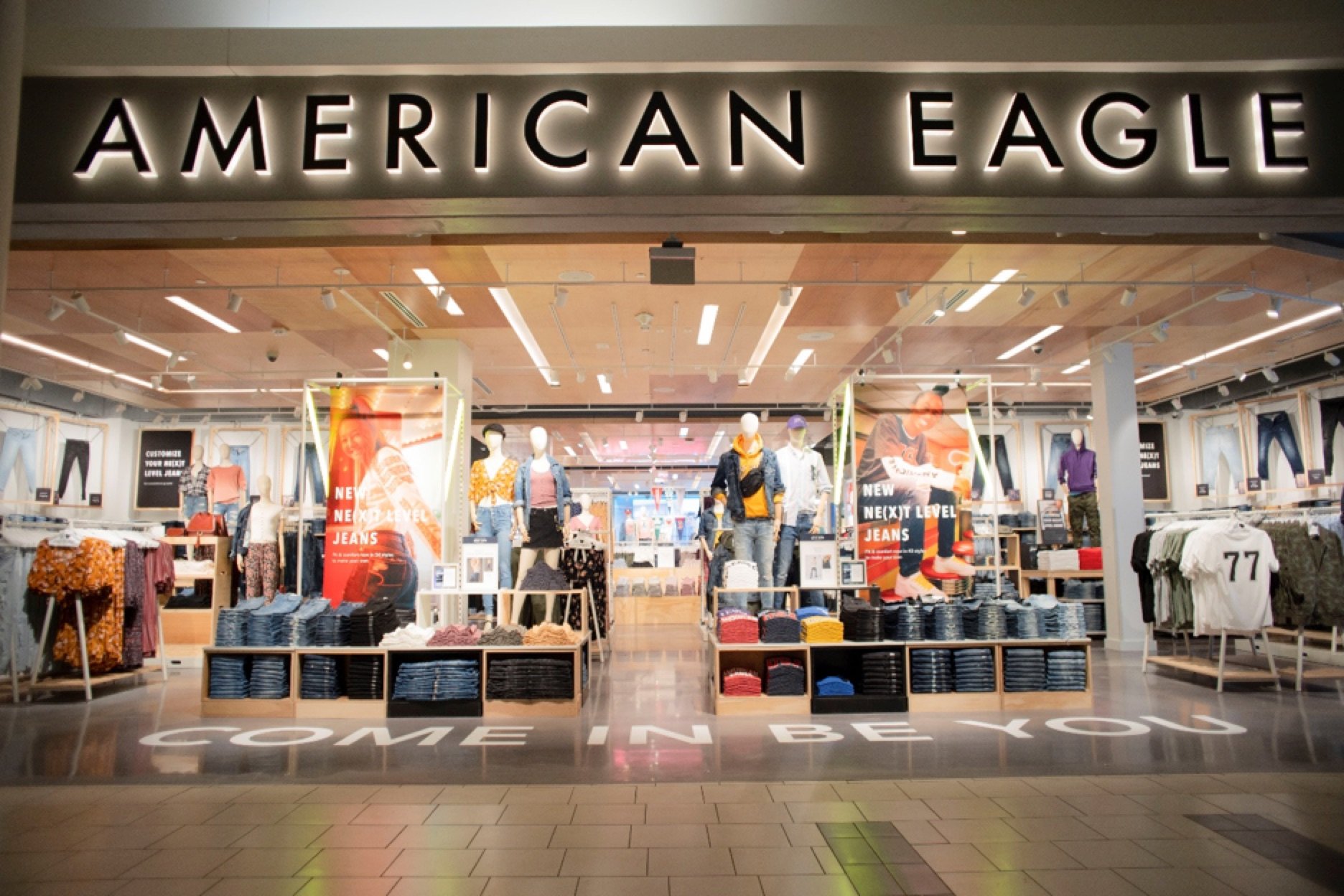Considering the disaster that Kmart acquiring Sears, Roebuck turned out to be, if American Eagle (AEO 3.54%) buys Abercrombie & Fitch (ANF 17.69%), we may experience deja vu all over again.
Sears Holdings (SHLD +0.00%) was unable to overcome the many structural problems inherent in the both ailing department store chains, nor could it adapt to the changing retail landscape. It teeters on the edge of bankruptcy today, only surviving because of the deep pockets of Chairman and CEO Eddie Lampert, who has bailed out his retail creation time and again. And because "Abercrombie Eagle" won't have the same financial backstop Sears enjoyed, their marriage -- should it occur -- won't end pretty.

Image source: American Eagle Outfitters.
Two not better than one
On the surface, there are arguments to be made in favor of a merger. The teen retailers might be able to realize some synergies from joint sourcing of goods and by shedding redundancies. Where American Eagle has enjoyed some success with its men's department and its Aerie lingerie concept, Abercrombie has continued to gain traction with its Hollister brand.
Overall, though, the retailers' successes have been at the periphery of their businesses, and haven't been enough to compensate for the difficulties encountered by their primary brands. American Eagle's Aerie, for example, achieved its 13th consecutive quarter of same-store sales growth last quarter, but there are only 103 Aerie stores among the more than 1,000 stores the retailer operates. Even though it's planning to grow that footprint by 50% this year, and the bralette trend is helping the concept store steal some business from L Brands (LB 3.09%) Victoria's Secret, that rival remains the giant in its niche, producing all by itself twice as much revenue as American Eagle does in total. And sales at AE's namesake brand continue to fall, with comps down 1% in the first quarter, compared to a 4% rise in Q1 last year.
Similarly, the Hollister chain has surpassed Abercrombie & Fitch as the growth vehicle for that company, generating $375 million in first quarter revenues, compared to the combined $286 million for A&F and its abercrombie kids concept. And where Hollister had 3% comps growth for the period, the company's namesake chain continued its downward spiral, with comps falling 10% year over year.
Slimming down by bulking up?
Bringing all these disparate lines under one roof won't necessarily improve them. Both companies are struggling to turn around the parts of their respective businesses that are faltering, which would become even more difficult if management's attention is diverted by the task of integrating them into a single, cohesive organization.

Image source: Abercrombie & Fitch.
It's said American Eagle is working with hedge fund Cerberus Capital Management to make a bid, and having the private equity firm involved would likely result in some ruthless (and arguably necessary) cost cutting, such as firing employees (including at the management level) and centralizing processes to wring out as many efficiencies as possible.
While American Eagle may be in better shape financially than Abercrombie, it won't necessarily gain from the transaction. The retail marketplace is undergoing an upheaval, and teen retailers are suffering the consequences as their target demographic is notoriously fickle in tastes and loyalty. The fast-fashion model of currently popular H&M and Zara has caught on -- Hollister largely adopted their strategies -- but a number of others have simply been unable to transform themselves quickly enough: Former teen faves Aeropostale, American Apparel, and Wet Seal have all sought bankruptcy protection within the past year. Bringing Aeropostale's 900 stores into the fold won't help American Eagle adapt faster.

Image source: Getty Images.
Real estate is no panacea
One of the foundations of the bullish investing thesis for Sears was that because it owned most of its stores, real estate was its true storehouse of value. And sales of those assets have repeatedly allowed Sears to generate one-time infusions of cash. Abercrombie, by contrast, leases all of its stores. That creates not only a problem with closing stores during a downturn, but unlike Sears, gives it nothing to sell.
That means American Eagle's thesis for acquiring Abercrombie rests solely on its ability to turn the target's business around -- when it hasn't quite figured out how to pull that off for itself. Further, American Eagle would be growing its footprint at a time when most apparel retailers are trying to reduce theirs.
In short, an American Eagle purchase of Abercrombie & Fitch would do nothing to fix either company's problems; would bolt more concerns onto an existing, ailing structure; and send the retailer swimming against industry currents. In these respects, it mirrors the flawed Kmart-Sears merger. Don't expect this remake to have a better ending than the original.









